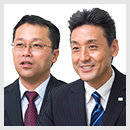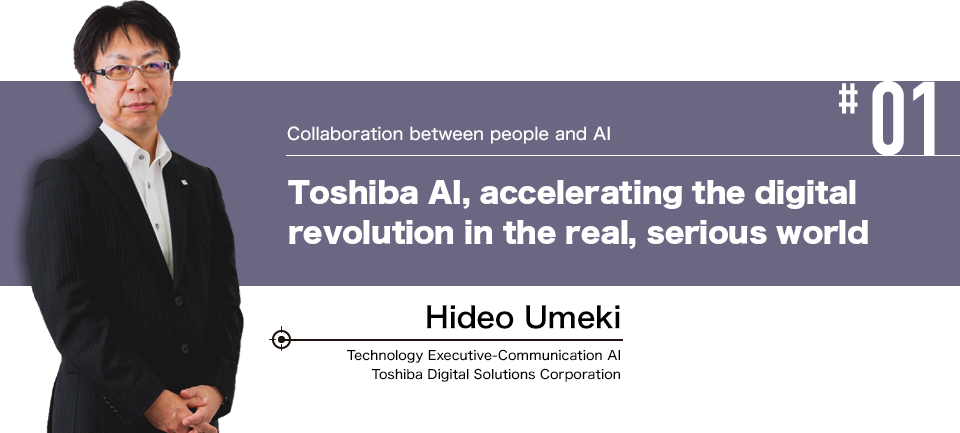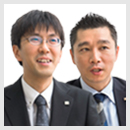The "digital revolution (fourth industrial revolution)," the tide of digitization progressing in every area of industry and society, is expected to bring major changes to industrial and social structures. It is connecting the real, physical world of industrial machinery, social infrastructure, and human action and business activity with the cyber world via the Internet. This will make it possible to control the physical world by assessing and predicting conditions. The Internet of Things (IoT), an area of Artificial Intelligence (AI) use, is growing, especially in the "serious world" – the areas that deal with human life, safety, and security, such as factory optimization, automated driving, finance, and medicine.
For this world, it is important to accept differences in physical objects and knowledge in the field, and, sometimes, to digitize the process of reconciliation in order to stand out. We believe that this area is one in which we can use the experience and expertise developed through the Toshiba Group's many years of taking on mission critical challenges in fields such as social infrastructure and developing diverse AI technologies.
Toshiba Digital Solutions, using an IoT architecture "SPINEX" to apply AI, is accelerating digital transformation in industrial fields such as manufacturing, energy, and social infrastructure. Let’s look at our AI strategy, through the digitization of the real, serious world, on what role AI should play in the future and how should relate to people, in order to bring people and things together more safely and comfortably.
Digital innovation
Competition in the serious world
The third industrial revolution of the late 20th century is also called the internet revolution because of the explosive rise of commercial internet services which took place in its later years. There, information searching, sharing services and real world processes such as advertising, selling were created in the cyber space, then the economy and society were transformed into an information economy and society characterized by such as immediacy, searchability, and global nature unique to cyber space.
How does the current digital revolution differ from the previous internet revolution? Are global companies, known as internet service giants, still the primary players in the digital revolution? Thinking about the features of the digital revolution along two axes, standard-custom and casual-serious, may make it possible to identify strengths and opportunities of a Japanese company [1] (Fig. 1).
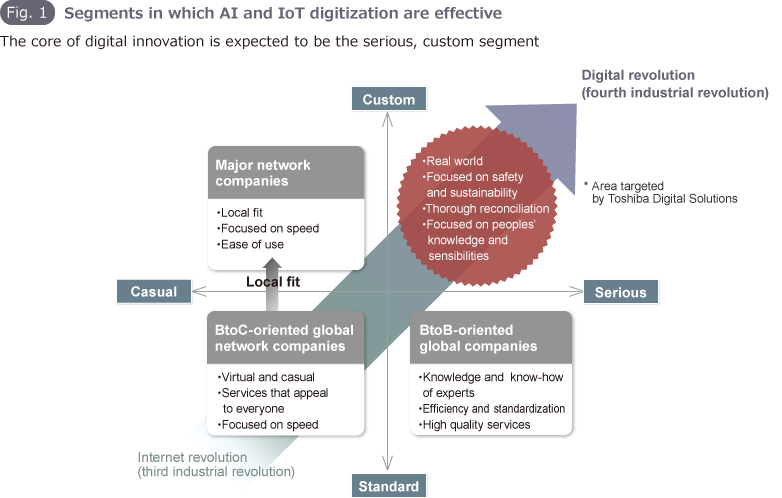
The products that have been the core of internet services until now have developed within the standard casual segment. Priority has been given to developing services which would be convenient for large numbers of people, rolling them out before anyone else, and providing them in a form that would be accepted by people from as many countries as possible. For some services, companies have appeared which try to tailor the services to individual countries and regions based on languages and national traits. While they have developed on their own, for the overall market development has been led by a handful of advanced global corporations, who have dominated the market. Because of this, even in the event of failure to meet performance requirements for automation and control in casual applications, the end result is a decrease in convenience. There is no serious impact on human life or security, so development has stayed at a level sufficient enough to reach the level needed for general public acceptance.
One of the features of the digital revolution, on the other hand, is the change it is producing in the custom, serious segment. This segment, including fields like factory optimization, automated driving, finance, and medicine, directly involves human life, safety, and security. The segment has, in the past, been one in which industries in developed countries have engaged in reconciliation with expertise developed over many years, and in which work is handled by detail-oriented veteran experts. For example, in the manufacturing field this expertise knowledge includes determining how to tie preceding and following processes, how to link different components, and how to combine them with precision. Diverse reconciliation using uncodified, implicit knowledge, the knowledge and techniques developed through past experience, and instinct based on experiences, has been carefully performed by craftsmen with deep field expertise. However, graying of society have led to a decrease in the number of those experts and their know-how. Manufacturing processes are becoming more complex and precise, and greater levels of productivity are called for. These are the reasons for the rising expectation for the digital revolution in the manufacturing fields. Other fields, such as finance and medicine, are experiencing the similar situation.
Click here to move to the top of this page.
Applying AI to the serious world to make up for shortages of experts
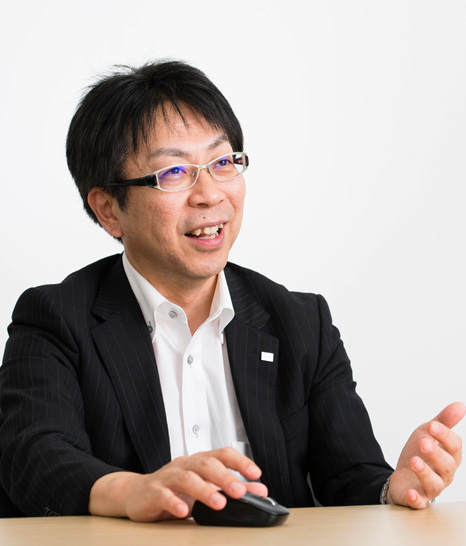
In applying AI to serious fields, it is not considered feasible to take the same approach used by internet services for the public, in which a leading global company suddenly launches a worldwide service and secures a dominant position. While this may be possible for information services such as maps, which can be used throughout the world, for serious services which deal with real-world things and people, performance and precision must be ensured by thoroughly reconciling them in the custom realm. Only the services that understand and reflects field situation, the knowledge and sensibilities of the people involved and have developed trust in the market will be accepted.
AI technology is evolving at breakneck speed. A recent topic is a cutting edge Go AI developed by a global, top-class IT company. This AI, without using game score data, successfully learned game strategies by playing against itself and generating its own data, after being provided with Go rules. This Go AI achievement is impressive, but while the number of Go score patterns is massive, the rules themselves, and the standards for determining victory or loss are simple, so this is an example of applying AI to the casual world. In the actual real, serious world, rules and evaluation criteria are diverse and constantly changing. Of course, decisions are made by people, and by automated system where responsibility lies relates possibility of major risk incident. This is why the people involved must understand and be aware of the rules and evaluation criteria used by the systems. This is not always an easy task. We believe that this is where AI can support.
AI can help make up for shortage of experts, and avoid the loss of implicit knowledge that has in the past been passed from person to person. To support people's decision-making by deriving evaluation criteria from human knowledge and conveying system conditions and status to people. This process is necessary when we digitize the real, serious world.
"Understanding human intentions and situations and communicating it to people clearly" Toshiba's communication AI "RECAIUS" is the key to achieving collaboration between people and AI.
Click here to move to the top of this page.
Toshiba's two AIs work together
RECAIUS connects people and things
We have developed two AI field technologies to support digitization with SPINEX. The first is the field of analytics AI, which handles system-related digitization, helping categorize massive amounts of data for production equipment and systems, perform forecasting, and provide optimized equipment control. The other is the field of communication AI, which handles person-related digitization, providing support for communication with people, understanding peoples’ intentions and the situations they find themselves in, and promoting the use of the knowledge they acquire (Fig. 2).
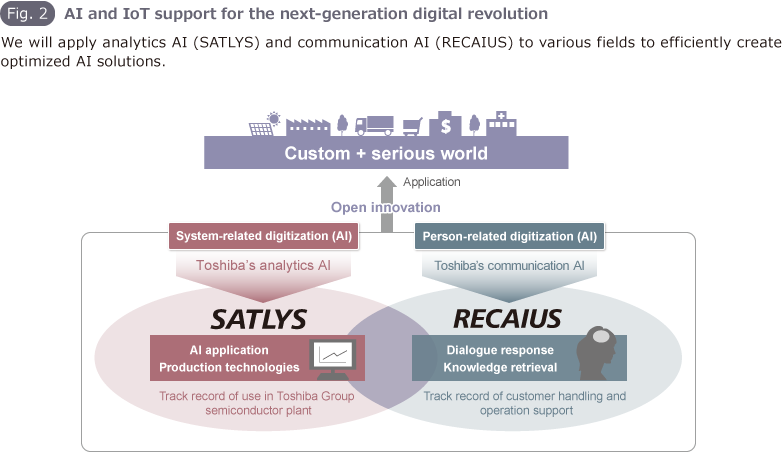
In the field of the analytics AI, "SATLYS," advanced image analysis technologies and deep learning technologies are used on signals and image data obtained from equipment in factory production lines to help discover the causes of product defects, identify signs of current and impending equipment problems, and automate and optimize equipment control. Verification projects have been carried out in various industrial fields. In the Toshiba Group's Yokkaichi flash memory plant, the SATLYS has supported to achieve a track record of yield improvements and stable equipment operation.
In the field of communication, the RECAIUS AI is providing component products and cloud services for human interface systems including speech recognition and synthesis, intent comprehension, dialogue response, knowledge retrieval, and person identification. Now applications for contact centers and field operations are under deployment.
RECAIUS helps connect people and things by performing broad-ranging situation assessment based on speech, images, and natural language, reflecting its assessments in system controls, and appropriately conveying the conditions of systems and things to people in an easy to understand manner.
We will continue to use AI to create an even greater range of solutions by promoting open innovation and platform deployment, as well as promoting the establishment of new business models through co-creation between platform specialists and system integrators. We are confident that these efforts will one day assist with the solving of the societal problems in the real, serious world.
Reference materials:
[1] Toyama, Kazuhiko. (2017). Reviving Companies with
AI Management. Bungeishunju
* The corporate names, organization names, job titles and other names and titles appearing in this article are those as of October 2017.
